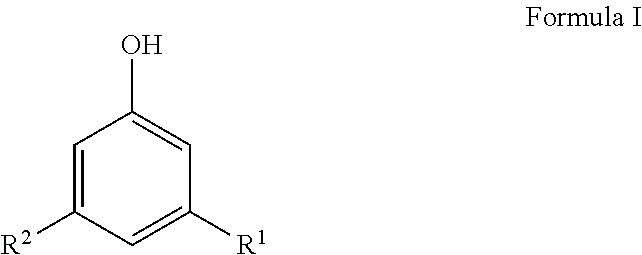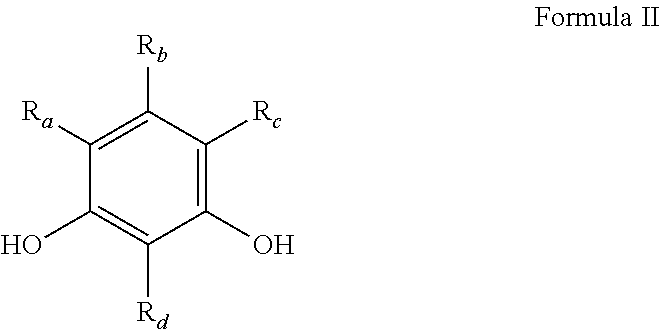Preparation of phenol-formaldehyde resin beads using suspension or emulsion polymerization
a technology of resin beads and phenol-formaldehyde, which is applied in the field of gel-forming resin or polymer particles, can solve the problems of difficult and expensive production of monolithic polymer gels, affecting the performance of aerogels, xerogels, or cryogels, and requiring significant amount of energy, time and specialized equipmen
- Summary
- Abstract
- Description
- Claims
- Application Information
AI Technical Summary
Benefits of technology
Problems solved by technology
Method used
Image
Examples
examples
[0123]In order to provide a better understanding of the foregoing discussion, the following non-limiting examples are offered. Although the examples may be directed to specific embodiments, they are not to be viewed as limiting the invention in any specific respect. All parts, proportions, and percentages are by weight unless otherwise indicated.
example i
[0124]Phenol (519.9 g) and formaldehyde (464.5 g) were added to a reactor. The reaction mixture was heated to 55° C. Triethylamine (15.6 g) was added slowly to the reactor over 30 minutes. The reaction mixture was then heated to 78° C. for 45 minutes. The reaction mixture was held at 78° C. until the Oswaldt viscosity reached 60 centistokes. The reaction mixture was cooled to 55° C. The reaction mixture was then distilled to a water content of 13% and a viscosity of 650 centipoise (cP). The resulting prepolymer was cooled to 25° C. and placed into collection bottles. 1.7 wt % of resorcinol based on the weight of the prepolymer and 1.7 wt % of maleic anhydride based on the weight of the prepolymer were added to the prepolymer. The prepolymer was stored in a cold room at a temperature of 5° C. for overnight.
[0125]The next day Flint Hills base oil (100 g) was added to a 500 mL glass beaker. The oil was stirred with a magnetic stir bar and heated to 95° C. on a hot plate (Corning PC-351...
example ii
[0126]Phenol (447.1 g) and formaldehyde (399.5 g) were added to a reactor. The reaction mixture was heated to 55° C. Dimethylethanolamine (13.5 g) was added slowly to the reactor over 15 minutes. The reaction mixture was heated to 77° C. over 30 minutes. The reaction mixture was held at 77° C. for 15 minutes and then heated to 90° C. for 25 minutes until the Car-Hol viscosity reached 125 cP. The reaction mixture was cool to 55° C. The reaction mixture was then distilled to a water content of 8.25% and a refractive index (RI) of 1.5900. The reaction mixture was heated to reflux and ethylene glycol (75.8 g) was added. The reaction mixture was then cooled to 25° C. A mixture of 70 wt % methane sulfonic acid (8.1 g) and ethylene glycol (56.0 g) was added to the reaction mixture. A mixture of 70 wt % methane sulfonic acid (454 g) and 908 g of water (908 g) was added to the reaction mixture. The pH of the reaction mixture was adjusted to 7. Water was added to the resulting prepolymer to a...
PUM
| Property | Measurement | Unit |
|---|---|---|
| cross-sectional length | aaaaa | aaaaa |
| temperature | aaaaa | aaaaa |
| viscosity | aaaaa | aaaaa |
Abstract
Description
Claims
Application Information
 Login to View More
Login to View More - R&D
- Intellectual Property
- Life Sciences
- Materials
- Tech Scout
- Unparalleled Data Quality
- Higher Quality Content
- 60% Fewer Hallucinations
Browse by: Latest US Patents, China's latest patents, Technical Efficacy Thesaurus, Application Domain, Technology Topic, Popular Technical Reports.
© 2025 PatSnap. All rights reserved.Legal|Privacy policy|Modern Slavery Act Transparency Statement|Sitemap|About US| Contact US: help@patsnap.com



